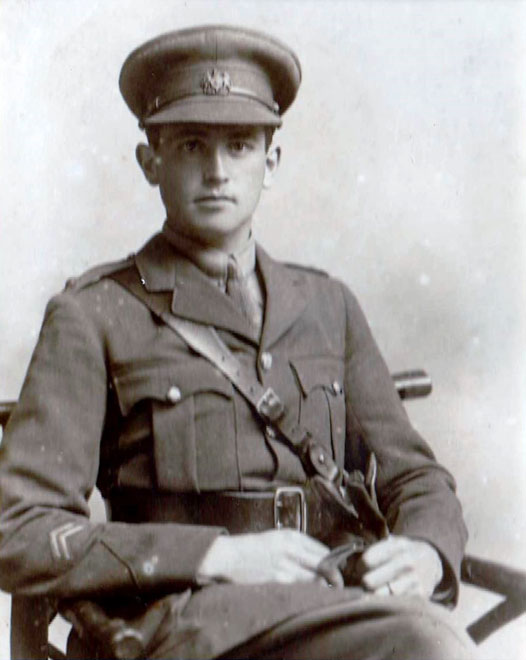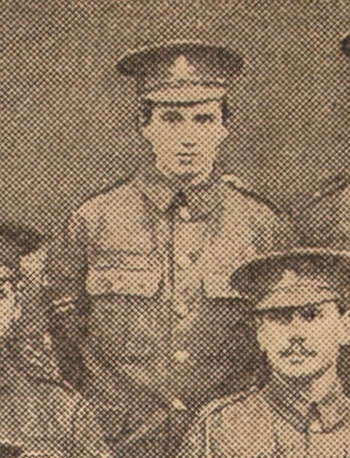Second Lieutenant John Sydney Copeland

John Sydney Copeland was born on 21 May 1894 at Newtownards, Co. Down, son of spirit merchant John Copeland and his wife Mary (nee McKee). Educated at the Model School in Newtownards and the Royal Belfast Academical Institution, he was serving an apprenticeship with Belfast linen manufacturers Richardson Sons & Owden when the war began.
He enlisted in the North Irish Horse on 6 October 1914 (No.1273).

Copeland at Antrim, December 1914
In the first half of 1915 Copeland embarked for England with F Squadron, where they awaited orders for France. While there, on 1 June, he was promoted to sergeant.
On 12 July, however, Copeland was one of about two dozen men of the squadron who volunteered for service as Military Mounted Police with the 54th (East Anglian) Division, which was under orders to join the Mediterranean Expeditionary Force. They sailed from Devonport on HMT Manitou on 29 July 1915, joining the landing at Suvla Bay between 10 and 16 August.
At the end of the year the Gallipoli campaign was abandoned. Copeland remained in his mounted police role with the 54th Division in Egypt. In February 1916 he unsuccessfully applied for a commission in the 6th (Inniskilling) Dragoons. He again applied for a commission in mid-1917. Backed by a good recommendation from his commanding officer, he was accepted for training at an officer cadet school, and embarked from Alexandria for home on 24 June 1917.
He reported at the No.2 Cavalry Cadet School, Kildare, on 11 January 1918. He was commissioned as a 2nd lieutenant on 23 June 1918 and posted to the 1st Reserve Regiment of Cavalry at the Curragh.
He relinquished his commission on 15 January 1919.
After the war Copeland served in the Ulster Special Constabulary. He was awarded an OBE (Civil Division) in the King’s Birthday honours list of 12 June 1941. He was then serving as District Commandant, Special Constabulary, Northern Ireland.
He died on 16 April 1979.
First image kindly provided by Mark Pollock. The second image can be seen in its full context here.
